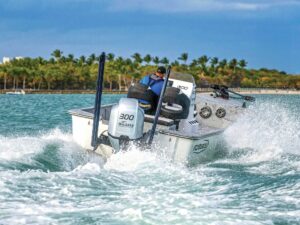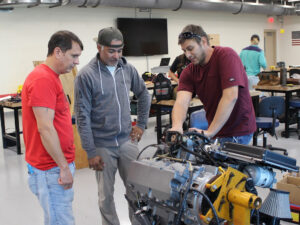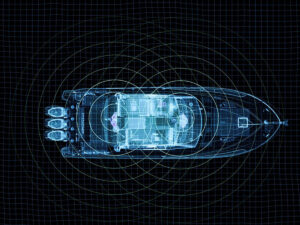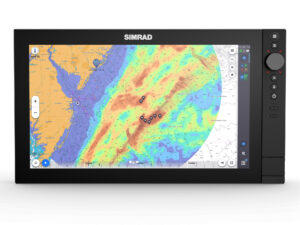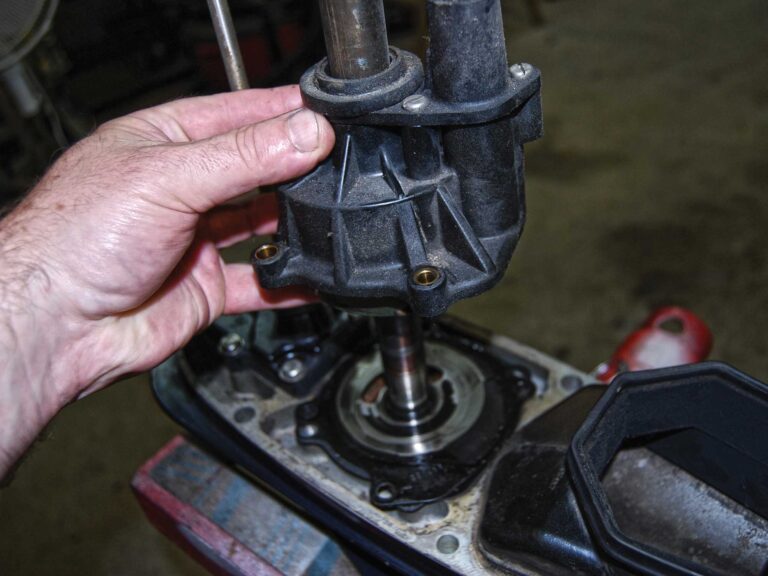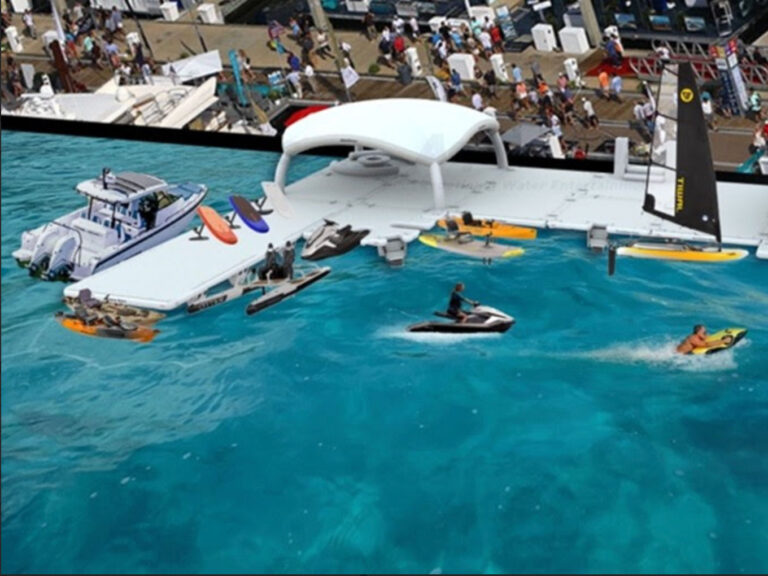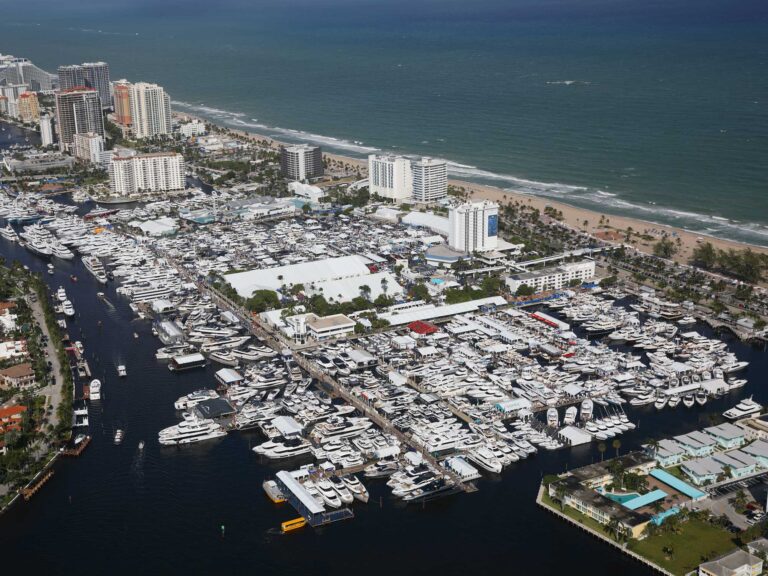
Ever since the Polynesians started crossing oceans on catamarans when much of the “civilized” world was still afraid of the sea, the idea of the twin hull has ebbed and flowed in popularity. For centuries in the Western world, the monohull ruled the seas. At least until 1876, when Nathanael Herreshoff designed a sailing catamaran that was so fast, cats were actually banned from racing for years. Yes, cats are cool. But how do they really stack up against the classic, tried-and-true deep-V monohull?
Let’s look at the strengths and weaknesses of catamaran and monohull boats. We picked two boats of similar length: the Sea Ray Fly 400 (43 feet 6 inches) and the Leopard 43 Power Cat (42 feet 8 inches). The Sea Ray displaces more (30,900 pounds versus 25,794 pounds), but the major difference is beam: The Leopard, carrying 22 feet 1 inch of beam, is nearly 9 feet wider than the Sea Ray (13 feet 6 inches). And that is where many differences between the two start.
Before we go on, we need to provide a disclaimer. We know we’re comparing apples to oranges to some degree, so don’t go sending us angry letters about an unfair comparison. Frankly, it’s sometimes good to compare the taste of oranges and apples. And here’s the thing: We like them both! Both boats ended up with good scores in some areas, lesser in others. We do believe that the concepts that surfaced as a result of comparing these two boats will help cruiser buyers make a more informed decision if the question of cat versus mono arises in their quest for a new boat. That said, let the comparison begin.

Fast Action: Speed Vs. Efficiency
With 960 hp from twin Cummins diesels, the Sea Ray easily wins in top speed at nearly 34.5 mph compared to the Leopard (27.6 mph), but at a serious cost in fuel. At 20 mph, the Leopard is using just 20 gph, for an even 1 mpg. At the same speed, the Sea Ray is using 32.6 gph, netting 0.5 mpg.
“A strength of the catamaran is that it has such low drag,” says Gino Morelli, the catamaran designer, whose credits range from America’s Cup contenders and Olympic-class cats through power cats for charter use up to a record-setting round-the-world 125-foot cat. “It’s just basic hydrodynamics: Two slim hulls have very low resistance. They push much less water than one wider hull and therefore require smaller engines for increased efficiency.”
The Sea Ray is faster; the Leopard is more efficient. It’s nice to have speed when you want to outrun an approaching squall or get to an anchorage first. On the other hand, you’ll probably spend most of your cruising time at the lower speed more comfortable to your guests.
Our take: Both are winners. It’s your choice.

Pain and Gain: Ride Vs. Handling
“Two sharp hulls pound less in a seaway too,” says Morelli. Monohulls, especially cruising monohulls like the Sea Ray, tend to experience bow rise when accelerating, while catamarans remain flat throughout their speed range. It’s generally agreed that catamarans provide a softer ride in a seaway because their knifelike hulls slice the waves rather than crush them, and the motion of a catamaran in waves is more like a cantering horse, which some people like and others don’t. At low speeds in a beam sea, some power cats can have a sharp roll as swells pass under each hull separately, but monohulls also roll considerably, which is why gyrostabilizers and stabilizer fins have become popular aboard monohulls. But the roll moment is different for each, and you may or may not prefer one motion to the other.
In hard turns, catamarans remain flat or even lean outboard somewhat, which can intimidate inexperienced skippers more used to the inboard bank of a monohull. Handling is another factor to consider, and catamarans have both good and bad features. With the engines widely spaced in the two hulls, a catamaran is more maneuverable at slow speed and spins easily by using its engines. A monohull, with the two engines close together, requires more power and technique to spin.
The downside of handling a cat, of course, is the much wider beam: Turning a platform that is more than half as wide as it is long can take planning, especially in narrow channels. Some, but not all, catamarans also have some weird quirks, such as “sneezing” between the hulls when running in some conditons, which sends spray over the bow, and also pounding at times at idle speeds due to air pockets.
Draft is something to keep in mind too, especially if you want to explore shallow waters. The Leopard draws 3 feet 1 inch compared to the Sea Ray at 3 feet 7 inches. The Leopard also has skegs to protect its props, rudders and running gear if you decide to nose up to a beach.
That 22-foot beam has another downside: It doesn’t fit in many marina slips, which means the Leopard is likely to moor on end ties (with more wave motion) or on side ties along a seawall, while the Sea Ray will fit into most any marina slip. Catamaran slips are often more expensive too.
Our take: The catamaran wins for its soft ride in a seaway. The V-hull wins for fitting into a greater number of protected, less-expensive marina slips.

Interior Accommodations – Salon
There’s no getting away from the fact that a 22-foot-wide boat will have more space than one with a 13-foot beam, or so it should seem. But that isn’t quite true. Let’s start with the salon.
Having a 20-something-foot-wide living room is something you don’t find aboard monohulls until you pass the 100-foot length, and this is exactly why catamarans are proving popular with liveaboard owners. In the case of the Leopard, there is a large dinette, a single-seat lower helm station, and a spacious L-shaped galley with counter space measured in acres. Galley gear includes a three-burner gas cooktop with gas oven, and a two-drawer fridge.
The Sea Ray has a doublewide helm station, a pair of facing couches, and a galley aimed more at dining ashore, with limited counter space, a two-burner electric cooktop, microwave and fridge.
While the Leopard salon excels in sheer space (there is room to dance in the salon), it also has one popular feature: a front door. Both boats have sliding doors aft into the cockpit, of course, but the Leopard has an offset door that opens to the foredeck for anchoring or sunning.
Our take: The salon winner is the Leopard catamaran.

Cabin
I said “so it should seem” about a wider beam on the Leopard equating to more space, which was true for the salon, but not so much for the staterooms. The Sea Ray has a conventional monohull layout for this length, with the master stateroom forward and a midship cabin under the salon with two berths that can slide together to become a double. The Sea Ray master cabin has a walk-around island queen-size berth, while the midship cabin has limited headroom, but a couch and a separate head are optional.
The Leopard, on the other hand, offers either a four-cabin or a three-cabin owner’s layout. The four-cabin is popular with chartering, placing two cabins in each hull, with a head and stall shower between, while the owner’s version fills the starboard hull with the berth aft and the bow becomes a large head with stall shower.
The shortcomings of the catamaran are the narrow hulls, which limit the width of the cabins. The berths literally fill each cabin, hullside to hullside, making these into less graceful crawl-in berths, and each cabin has limited floor space and stowage.
Our take: We’ll call this even, depending on whether you want more smaller cabins or fewer but more-spacious cabins.

Flybridge
Once again, sheer beam is the determining factor in flybridges. The Leopard has a wraparound dinette, doublewide helm seat, and outdoor galley with barbecue grill and fridge. The Leopard bridge still has ample space for deck chairs or kayaks. A walk-through next to the helm leads to a sun pad on the forward bridge for lounging.
The Sea Ray 400 Fly has a single helm chair and a double companion seat, as well as a dinette and mini galley, but no extra space.
Our take: The Catamaran’s extra width offers a more spacious flying bridge.

Transom Platform
The Leopard Power Cat has smaller transom platforms, but there are two of them. Leopard created a clever electric davit that can launch or retrieve a tender and provide secure stowage while underway, making tender operations easy. The Sea Ray offers a standard transom platform or an optional hydraulic platform, either of which serves as a terrific “beach” for your crew while at anchor. It can carry up to a 500-pound tender such as a Sea-Doo Spark PWC.
Our take: The monohull’s single wide swim platform is superior for tender handling, swimming and socializing
Fit and Finish
This last item is empirical, and the fact is the two boats are finished to different standards. The Leopard ($459,000 MSRP), like many catamarans, is designed for minimal maintenance for tough charter service, with expanses of fiberglass and Formica-like materials. The Sea Ray ($809,542 MSRP), on the other hand, uses fabrics and finishes that create a more opulent, yachtlike interior.
Engine access on the Sea Ray 400 Fly is good via a gas-lifted cockpit deck, while the Leopard engines are under the berths in the two aft cabins, which rise on gas lifts, but there is some upheaval of two cabins to check the oil. Again, a personal choice: one engine room or two.
Our take: Finish is not strictly a cat or mono attribute. Any boat can be finished to any level, depending upon the builder’s target market.
Catamaran or monohull? Both are right for certain owners and, just like apples and oranges, both taste good for different reasons. Boating‘s position for decades has been and continues to be: There is no perfect boat, but there is probably a boat that is perfect for you.

